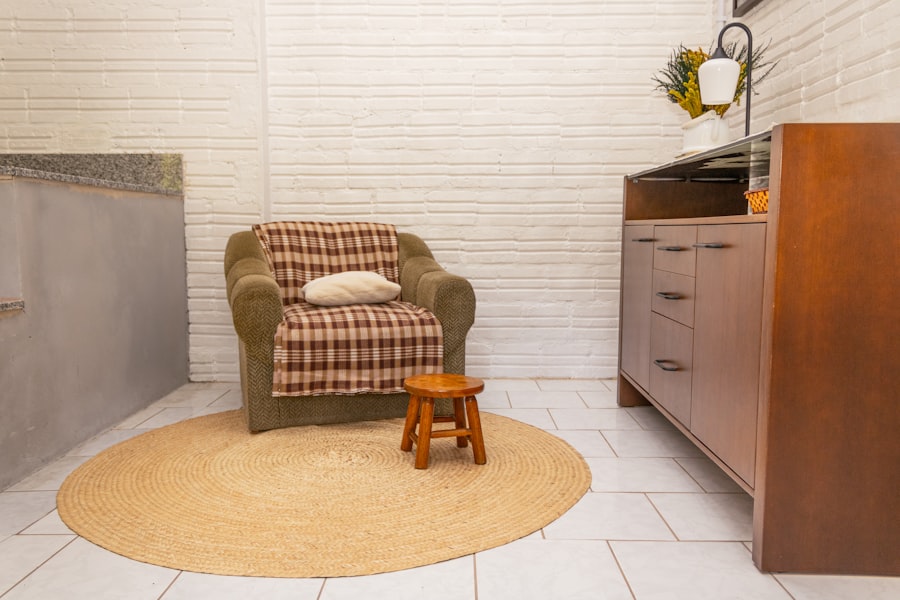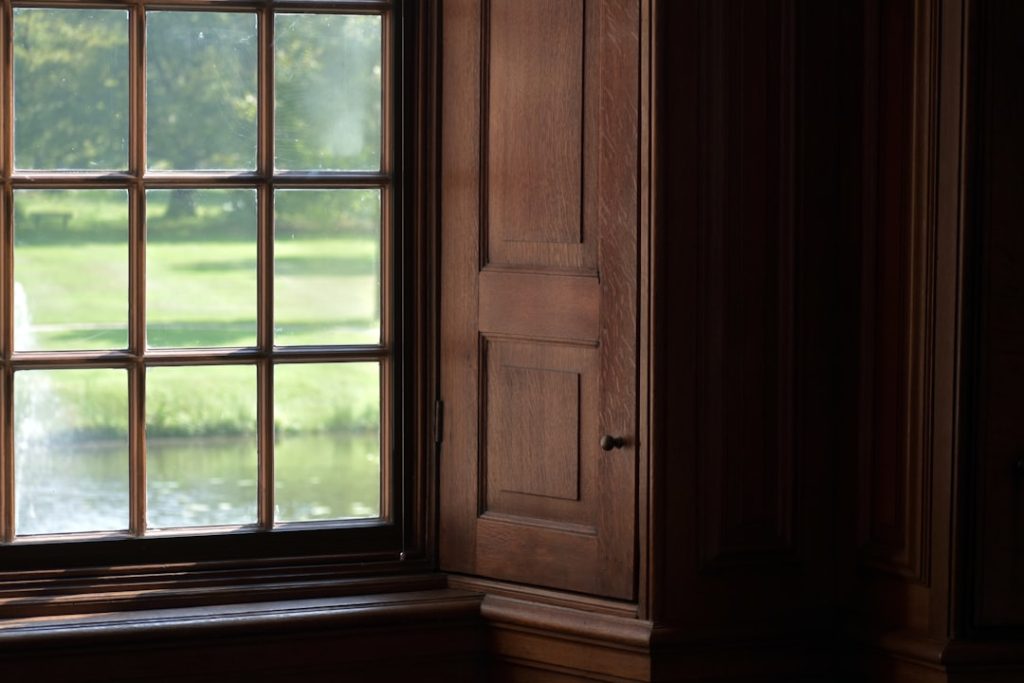Built-in corner cabinets have emerged as a popular solution for homeowners seeking to optimize their living spaces. These cabinets are designed to fit snugly into the often underutilized corners of rooms, transforming what would otherwise be wasted space into functional storage areas. The appeal of built-in corner cabinets lies not only in their practicality but also in their ability to enhance the aesthetic of a room.
By seamlessly integrating into the architecture of a home, these cabinets can provide a polished and cohesive look that free-standing furniture often lacks. The versatility of built-in corner cabinets makes them suitable for various settings, from kitchens and living rooms to home offices and bedrooms. They can be crafted from a range of materials, including wood, metal, and glass, allowing homeowners to choose finishes that complement their existing decor.
Additionally, built-in corner cabinets can be customized to meet specific storage needs, whether it’s for books, kitchenware, or decorative items. This adaptability is particularly beneficial in smaller homes or apartments where maximizing every square inch is essential.
Key Takeaways
- Built-in corner cabinets optimize unused corner spaces, enhancing storage and functionality.
- Selecting the right design depends on your room layout and storage needs.
- Custom built-in cabinets can transform awkward spaces into practical storage solutions.
- Integrating corner cabinets into kitchen design improves organization and accessibility.
- Proper installation and maintenance ensure durability and long-term use of built-in cabinets.
Choosing the Right Design for Your Space
Selecting the right design for built-in corner cabinets involves considering both functionality and aesthetics. The first step is to assess the specific needs of the space. For instance, in a kitchen, corner cabinets can be designed to house pots, pans, and small appliances, while in a living room, they might serve as display cases for collectibles or bookshelves.
Understanding the primary use of the cabinet will guide the design process, ensuring that it meets practical requirements while also enhancing the overall look of the room. Another critical factor in choosing a design is the architectural style of the home. A modern home may benefit from sleek, minimalist corner cabinets with clean lines and a glossy finish, while a traditional space might call for ornate cabinetry with intricate moldings and rich wood tones.
Additionally, color plays a significant role in how built-in corner cabinets blend with the surrounding decor. Neutral colors can create a seamless look, while bold hues can make a statement and serve as focal points within a room. Ultimately, the design should reflect the homeowner’s personal style while harmonizing with the existing elements of the space.
Maximizing Storage with Built-In Corner Cabinets

One of the primary advantages of built-in corner cabinets is their ability to maximize storage in areas that are often overlooked. Traditional furniture pieces may leave corners empty or cluttered, but built-in solutions can transform these spaces into organized storage havens. By utilizing vertical space and incorporating shelves, drawers, and compartments, homeowners can create efficient storage systems that cater to their specific needs.
For example, in a kitchen setting, corner cabinets can be designed with pull-out shelves or lazy Susans that allow easy access to items stored at the back. This design not only maximizes storage capacity but also enhances functionality by making it easier to retrieve items without having to dig through clutter. In living rooms or dens, built-in corner cabinets can be equipped with adjustable shelving to accommodate various items, from books to decorative pieces.
By thoughtfully planning the layout and features of these cabinets, homeowners can significantly increase their storage capabilities without sacrificing style.
Utilizing Awkward Spaces with Custom Built-In Corner Cabinets
| Metric | Value | Unit | Notes |
|---|---|---|---|
| Average Space Utilization Increase | 30 | % | Compared to standard corner cabinets |
| Custom Cabinet Depth | 24-36 | inches | Varies based on space and design |
| Installation Time | 6-8 | hours | For a typical kitchen corner cabinet |
| Material Options | 5 | types | Includes wood, MDF, plywood, laminate, and metal |
| Average Weight Capacity | 50-75 | pounds | Depends on shelving and hardware used |
| Customizable Features | 7 | options | Includes shelves, pull-outs, lazy susans, lighting, finishes, handles, and soft-close hinges |
| Typical Cabinet Height | 34.5 | inches | Standard base cabinet height |
Awkward spaces in a home can often pose challenges when it comes to furniture placement and storage solutions. However, custom built-in corner cabinets offer an effective way to address these issues by transforming difficult areas into functional and attractive features. Whether it’s an odd-shaped room or an area with sloped ceilings, custom cabinetry can be tailored to fit precisely within these constraints.
For instance, in a small bedroom with an angled wall, a custom-built corner cabinet can provide essential storage for clothing or linens while maximizing floor space. Similarly, in a living room with an unusual layout, a built-in corner cabinet can serve as both storage and display space for art or family photos. The key to successfully utilizing awkward spaces lies in working with a skilled carpenter or designer who can create solutions that are both practical and visually appealing.
By embracing the unique characteristics of a space rather than trying to work around them, homeowners can enhance their living environments significantly.
Incorporating Built-In Corner Cabinets into Your Kitchen Design
Incorporating built-in corner cabinets into kitchen design is an excellent way to enhance both functionality and style. The kitchen is often considered the heart of the home, where family gatherings and culinary creations take place. Therefore, optimizing this space with smart storage solutions is essential.
Built-in corner cabinets can be designed to fit seamlessly into the kitchen layout, providing ample storage for cookware, utensils, and pantry items. One popular design choice is the L-shaped corner cabinet that utilizes both walls of the kitchen. This configuration allows for maximum storage capacity while maintaining easy access to frequently used items.
Additionally, incorporating features such as pull-out shelves or deep drawers can further enhance usability. Homeowners may also consider glass-front doors for upper corner cabinets to display beautiful dishware or decorative items while keeping them easily accessible. The integration of built-in corner cabinets not only improves organization but also contributes to a cohesive kitchen design that reflects personal style.
Tips for Installing and Maintaining Built-In Corner Cabinets

Installing built-in corner cabinets requires careful planning and execution to ensure they fit perfectly within the designated space. One crucial tip is to measure accurately before beginning any installation process. This includes not only the dimensions of the cabinet itself but also the surrounding walls and any other furniture that may impact placement.
It’s advisable to work with professionals who have experience in cabinetry installation to avoid common pitfalls such as misalignment or inadequate support. Once installed, maintaining built-in corner cabinets is essential for preserving their appearance and functionality over time. Regular cleaning is necessary to prevent dust accumulation and maintain the finish of the cabinetry.
For wooden cabinets, using appropriate wood cleaners and conditioners can help protect against wear and tear. Additionally, checking hinges and hardware periodically ensures that doors open smoothly and remain securely attached. By following these maintenance tips, homeowners can enjoy their built-in corner cabinets for years to come.
Customizing Built-In Corner Cabinets for Different Rooms
The customization of built-in corner cabinets allows homeowners to tailor these features to suit various rooms throughout their homes. In a home office, for example, corner cabinets can be designed with integrated desks or shelving for office supplies and books. This not only maximizes workspace but also keeps everything organized and within reach.
The use of technology-friendly features such as cable management systems can further enhance functionality in modern home offices. In bedrooms or nurseries, built-in corner cabinets can serve as stylish storage solutions for clothing or toys while maintaining an uncluttered look. Custom designs may include features like soft-close drawers or hidden compartments for added convenience.
In dining rooms or formal living areas, corner cabinets can be crafted as elegant display cases for fine china or collectibles, adding character and sophistication to the space. The ability to customize built-in corner cabinets ensures that they meet the unique needs of each room while contributing positively to the overall design aesthetic.
The Benefits of Maximizing Space with Built-In Corner Cabinets
Built-in corner cabinets offer numerous benefits that extend beyond mere aesthetics; they are practical solutions for maximizing space in any home. By effectively utilizing corners that would otherwise remain empty or cluttered, these cabinets provide valuable storage options tailored to individual needs. Their customizable nature allows homeowners to create unique designs that reflect personal style while enhancing functionality across various rooms.
Moreover, incorporating built-in corner cabinets into home design promotes organization and efficiency, making it easier to maintain tidy living spaces. As homes continue to evolve in size and layout preferences shift towards open-concept designs, the importance of smart storage solutions like built-in corner cabinets becomes increasingly evident. Ultimately, investing in these versatile features not only enhances the beauty of a home but also significantly improves its livability by maximizing every inch of available space.



